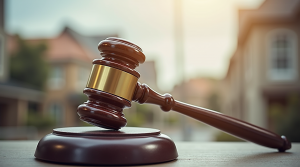California Senate Bill 721: What Property Owners Must Know About EEE Compliance
As a real estate investor in California, staying compliant with new legislation, especially when it concerns the safety of your tenants, is imperative. With Senate Bill 721 now in effect, focusing on exterior elevated elements (EEEs) of your multifamily residential buildings, understanding your responsibilities can be a daunting task. But worry not – we’re here to break down the essentials for you.
Understanding SB 721 and Its Necessity
Senate Bill 721 mandates regular inspections of EEEs like balconies, decks, and external stairways in multifamily properties with three or more units. These structures are not only intricate but also vital in ensuring tenant safety. Whether your building’s EEEs reach more than six feet above ground level and consist primarily of wood or similar materials, you are required to adhere to these new inspection guidelines. Regular inspections keep these elements in check, mitigating the risk of structural failure that could lead to severe accidents and liabilities.
Inspection Frequency: Keeping a Routine for Safety
Regularity in inspections is key to compliance. Under SB 721, you’re required to inspect at least 15% of each type of EEE within your building every six years. Set your calendars for January 1, 2026, especially if your property hasn’t undergone recent inspections before 2019. This cycle ensures that you aren’t just adhering to a one-time compliance measure but are engaging in a proactive, continuous safety practice.
Who Holds the Clipboard? Inspector Qualifications You Need to Know
Navigating inspection qualifications is crucial. Inspections under SB 721 need to be independent. Choose experts who are free from potential conflicts of interest, like licensed contractors (B/C-5), architects, or structural engineers who aren’t affiliated with your local jurisdiction’s office. This arms-length principle ensures transparency and credibility in your safety assessments.
What Does the Inspection Entail? A Comprehensive Look
During an SB 721 inspection, expect a thorough evaluation of the structural integrity and safety of your building’s EEEs. Inspectors will undertake visual assessments for decay or damage, review waterproofing systems, evaluate attachment points and supports, and provide a holistic appraisal of both immediate and future performance concerns. Any hazards requiring urgent attention will be flagged for restrictions in usage and rapid repairs.
SB 721 vs. SB 326: A Quick Comparison
Though SB 721 primarily applies to multifamily rentals, it’s beneficial to know that SB 326 regulates condominiums with a slightly different approach, including a longer inspection interval (nine years) and specific inspection criteria. Knowledge of both can aid in understanding broader EEE regulations, especially if you own varied property types.
Staying Current and Compliant
Ensuring continuous compliance with SB 721 isn’t just about meeting legal obligations; it’s a commitment to safeguarding the lives and well-being of your tenants. Regular updates from legislative amendments and guides from city building departments can keep you informed about any changes or nuances in these mandates.
In the realm of property management, clenched anxiety over compliance need not be your constant companion. Equip yourself with these insights, plan systematically, and stay ahead in creating a safe habitable environment. Your awareness and action today may well be the pillars of safety that uphold your legacy in the property business tomorrow.


